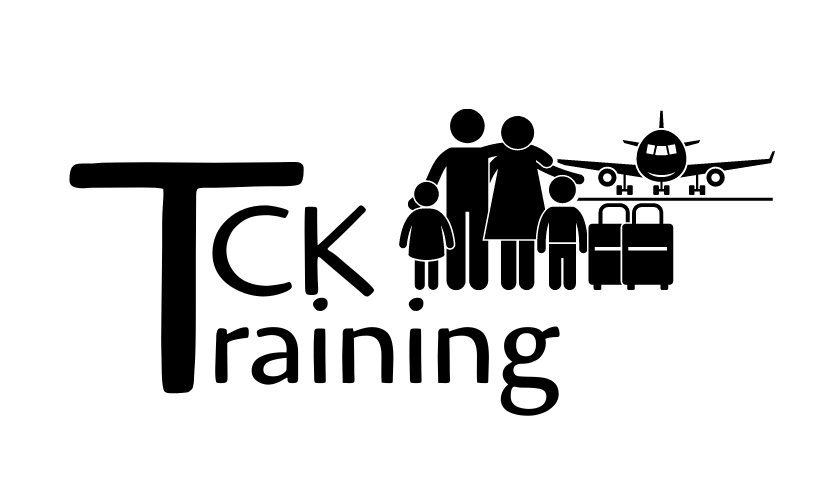Caution and Hope for Children of International Educators and Humanitarian workers
When TCK Training released our white paper, Caution and Hope: The Prevalence of Adverse Childhood Experiences in Globally Mobile Third Culture Kids, we knew we were only beginning to scratch the surface of what we could learn from the data we had collected from 1,904 individuals who completed our 2021 survey on developmental trauma in globally mobile Third Culture Kids. This is part of a series of blog posts that looks a little deeper at certain sub-groups represented in the data.
Caution and Hope for Children of International Educators and Humanitarian Workers
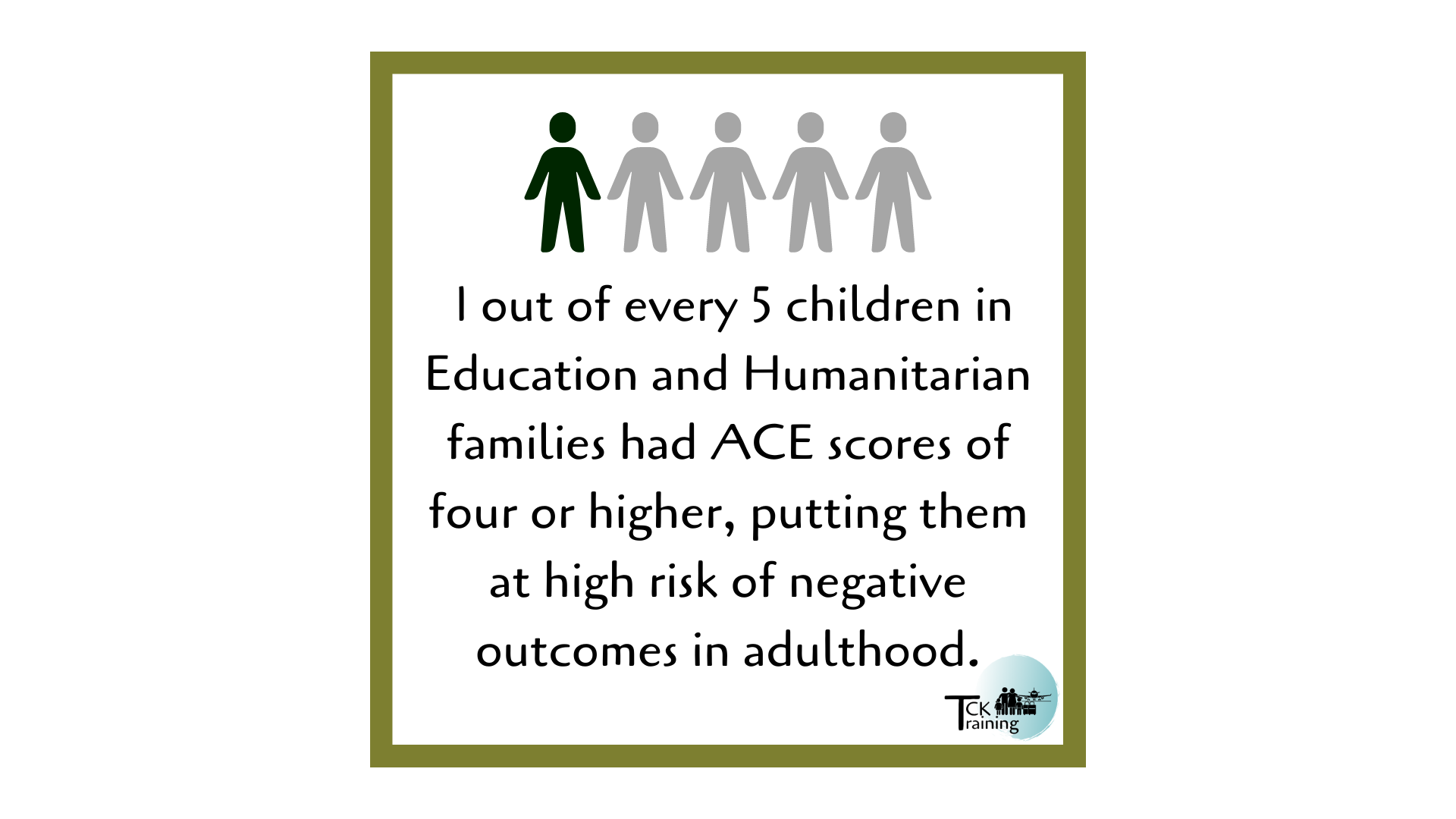
Both the education and NGO sectors had fewer than 100 respondents (92 and 58 respectively). A sub-group of 100 people is important for high quality statistics, and for this reason we combined them into a single data set of 150 respondents we labeled “Edu-NGO.” In this blog post, we will take a detailed look at who comprised these sectors, some of the similarities and differences between them on a smaller scale, and how the larger Edu-NGO group compared to other sectors we sampled.
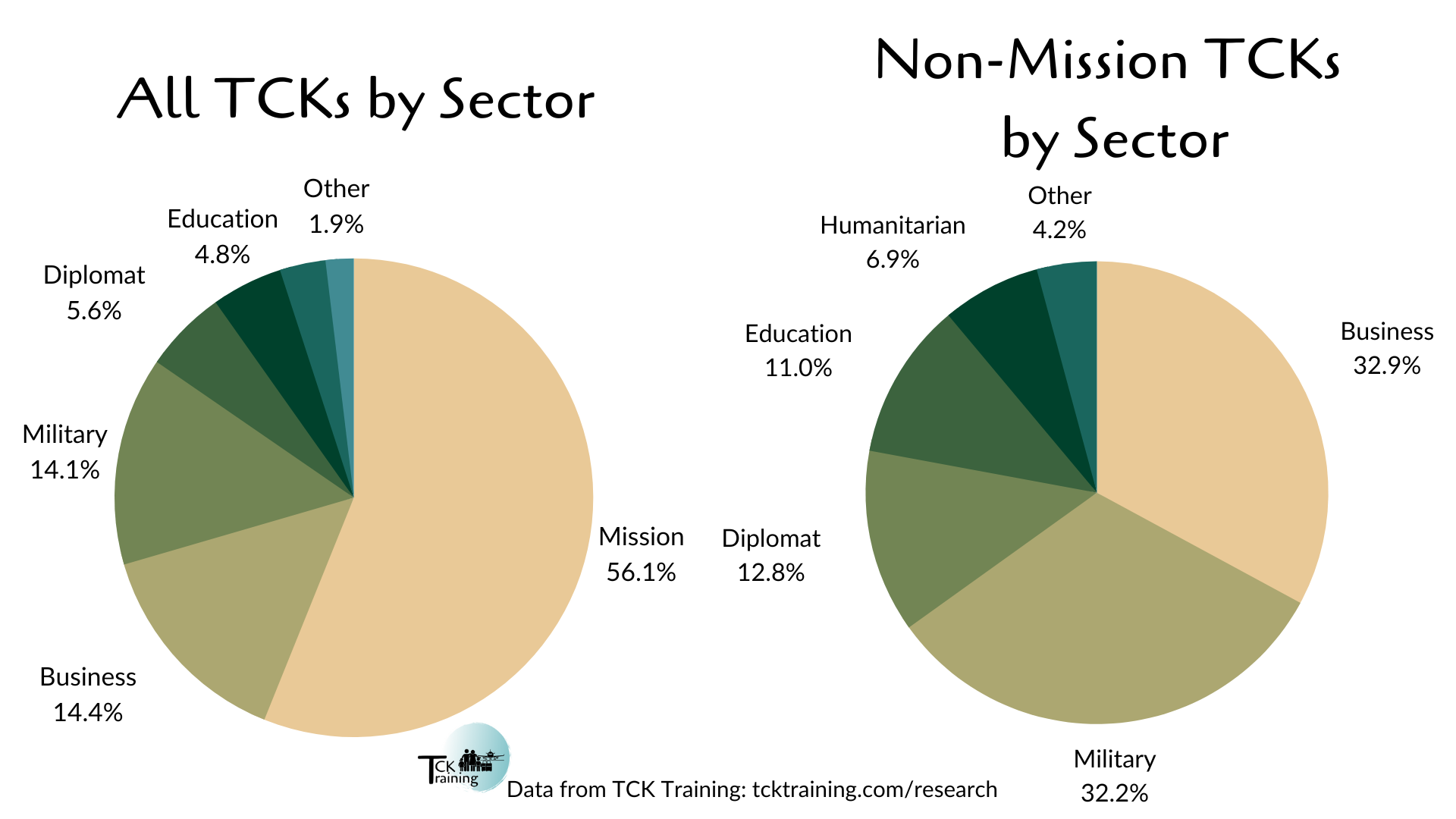
The Edu-NGO sector comprised several different experiences. On the Education side, there were mostly children of educators. Dr Ettie Zilber wrote a book about these TCKs, using the term “Ed Kids” to describe them. We also had 11 TCKs in our sample who lived overseas because their parents were studying. Often this happens when a parent has a student visa in order to get a PhD or other high qualification that was not available (or not available at a high standard, or in the field they were pursuing) in their own country.
On the NGO side, we had TCKs from a wide range of experiences within the general humanitarian/charity sector. Some were with intergovernmental organizations, others were with non-governmental organizations. For the purposes of this survey, we also included those whose families worked for governmental charity/humanitarian groups (such as USAID) in the NGO group. Throughout this blog post, we will call this the Humanitarian sub-group.
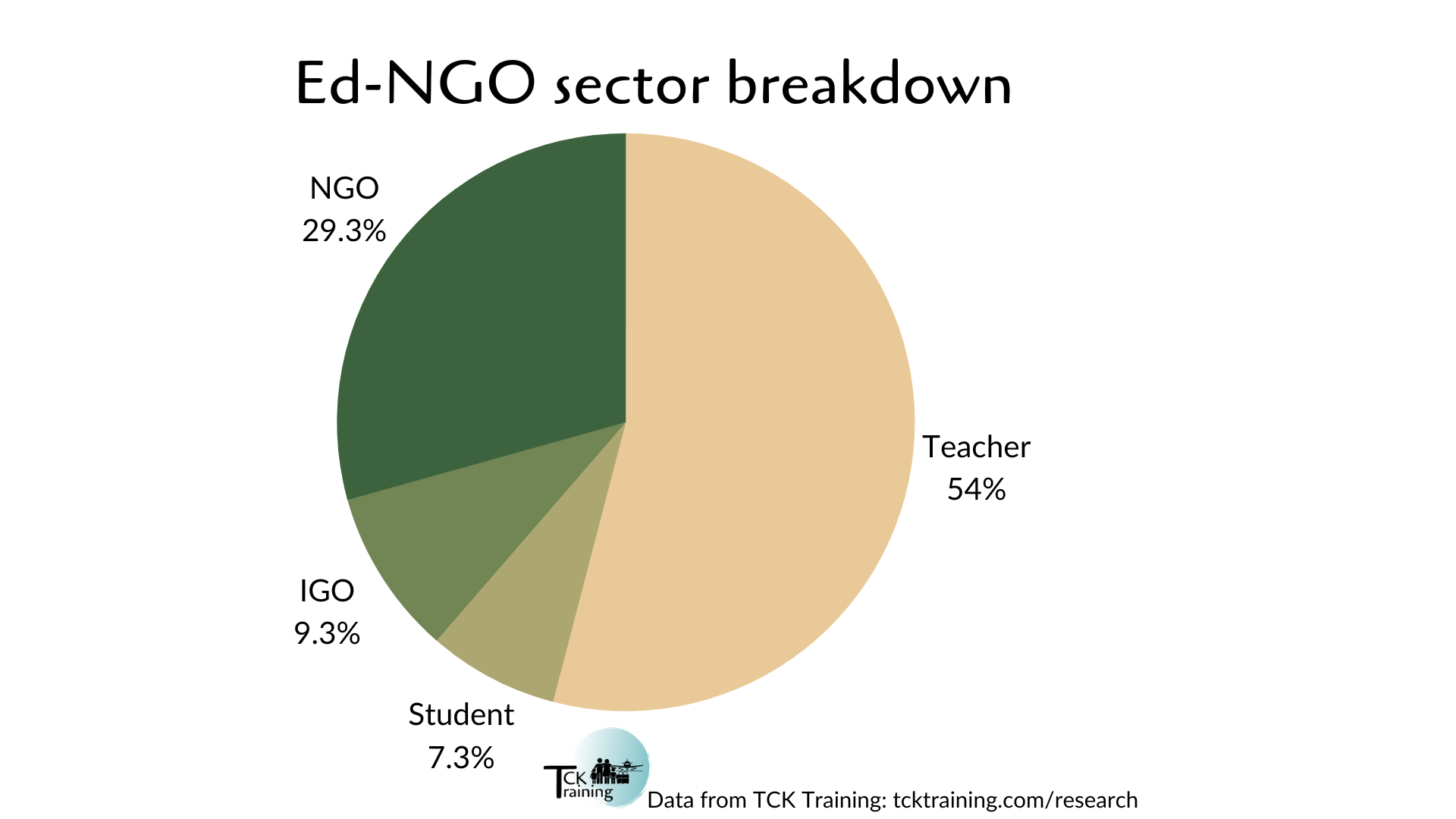
Core Education Type
When the education and Humanitarian sub-groups are distinguished, there are some differences in core education type. The education stats among mission kids were very different from the rest of our TCK sample, so separating the stats for mission and non-mission groups is useful.
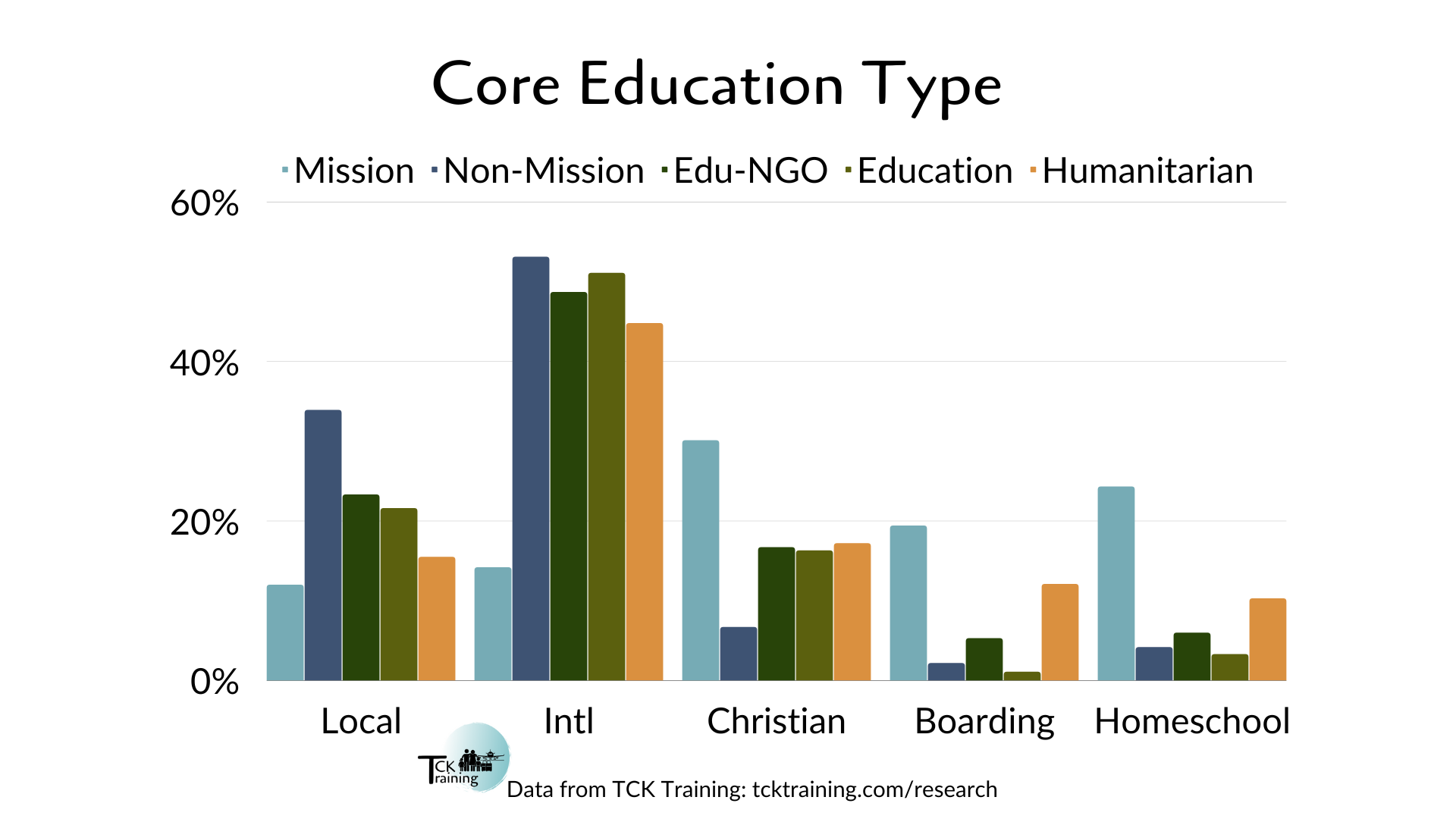
Mobility
Discrepancies between the two sub-groups also appear when mobility is considered. The Humanitarian TCKs experienced greater childhood mobility than the Education TCKs across all three categories we surveyed: number of countries lived in, number of location moves, and number of house moves.
When it came to country moves, Education TCKs were quite close to the overall average of 1,904 TCKs in our sample. Humanitarian TCKs, on the other hand, were much more mobile; they were more than twice as likely to experience extreme country mobility (living in more than five countries before age 18).
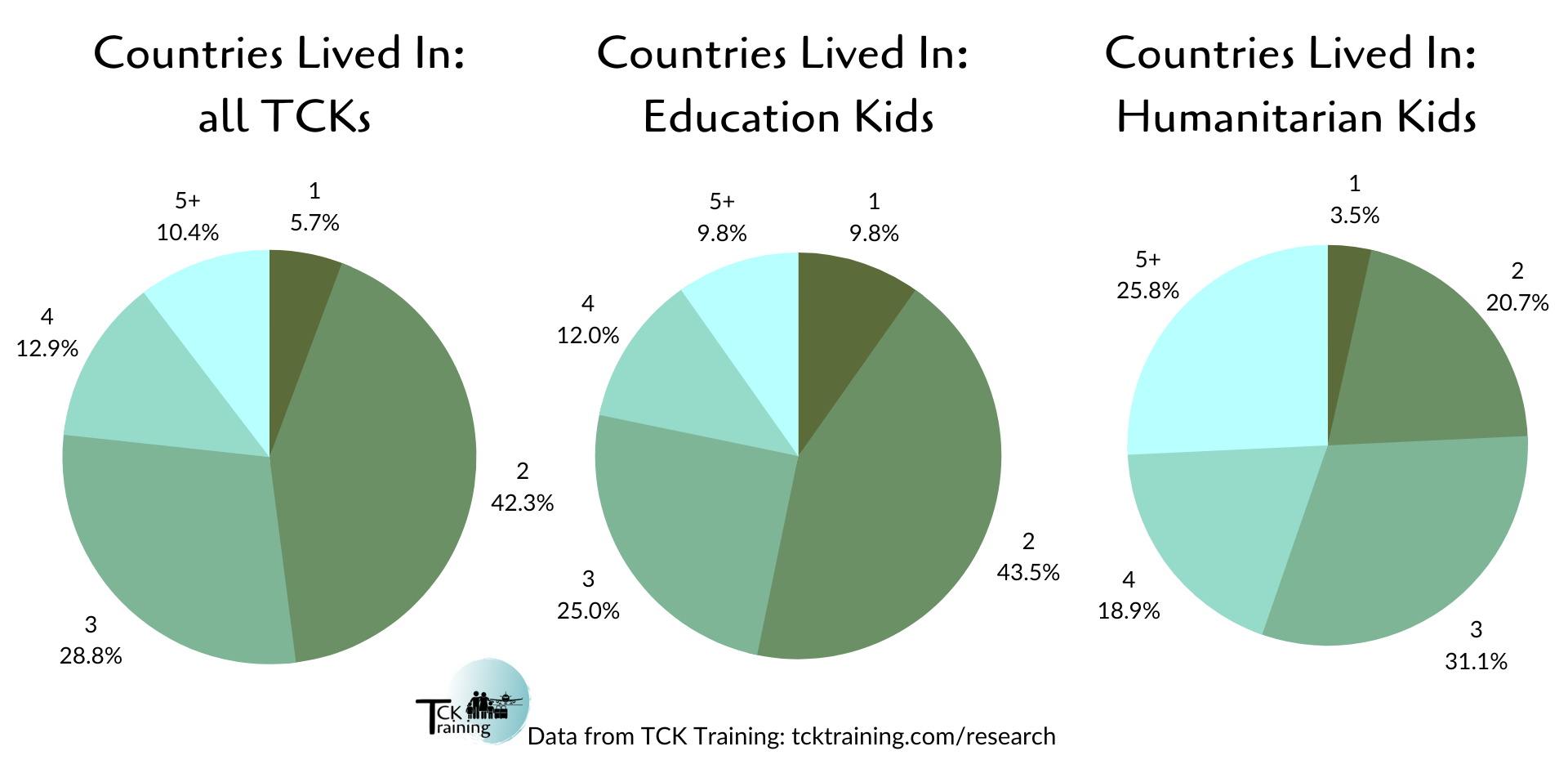
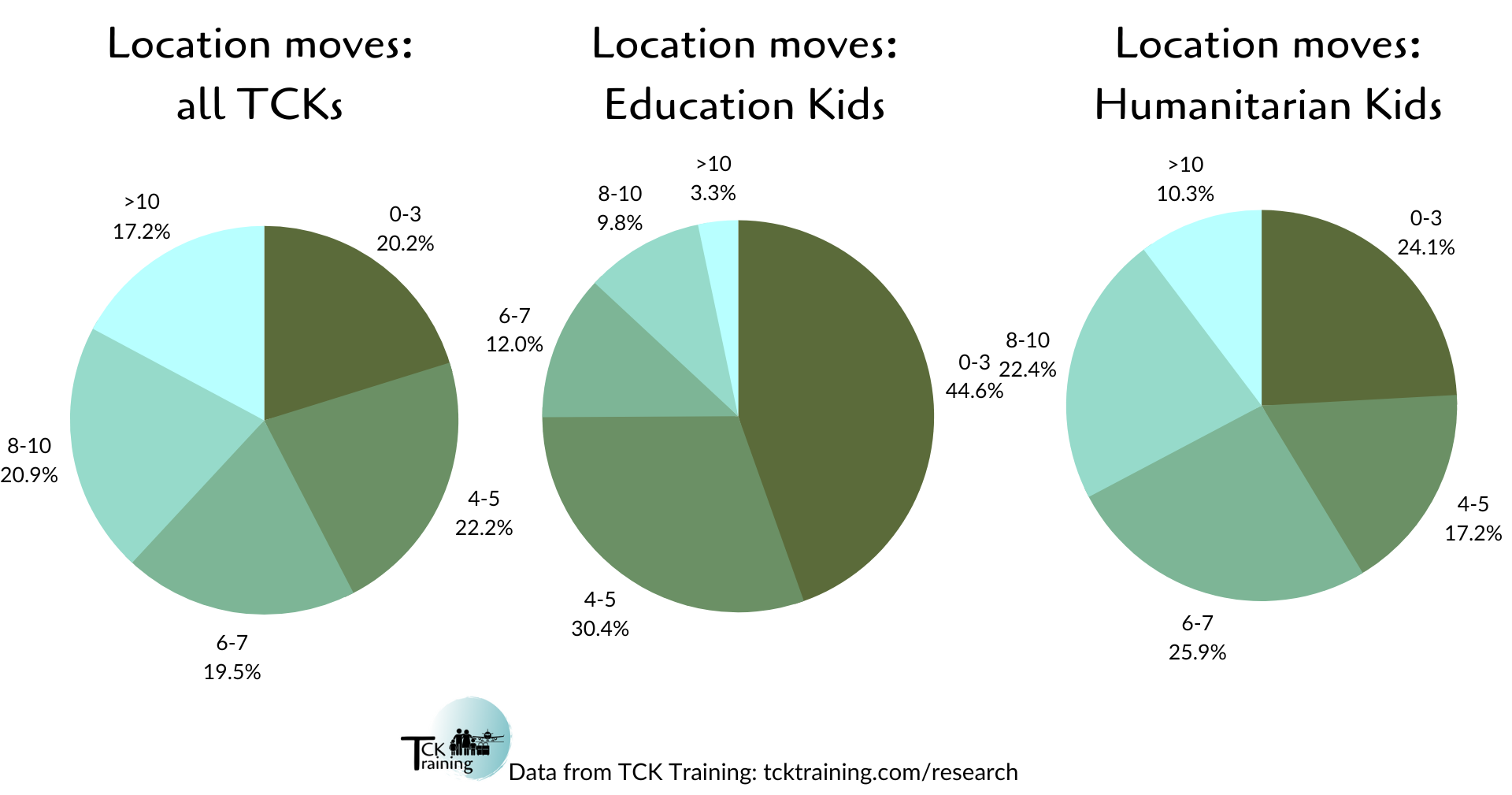
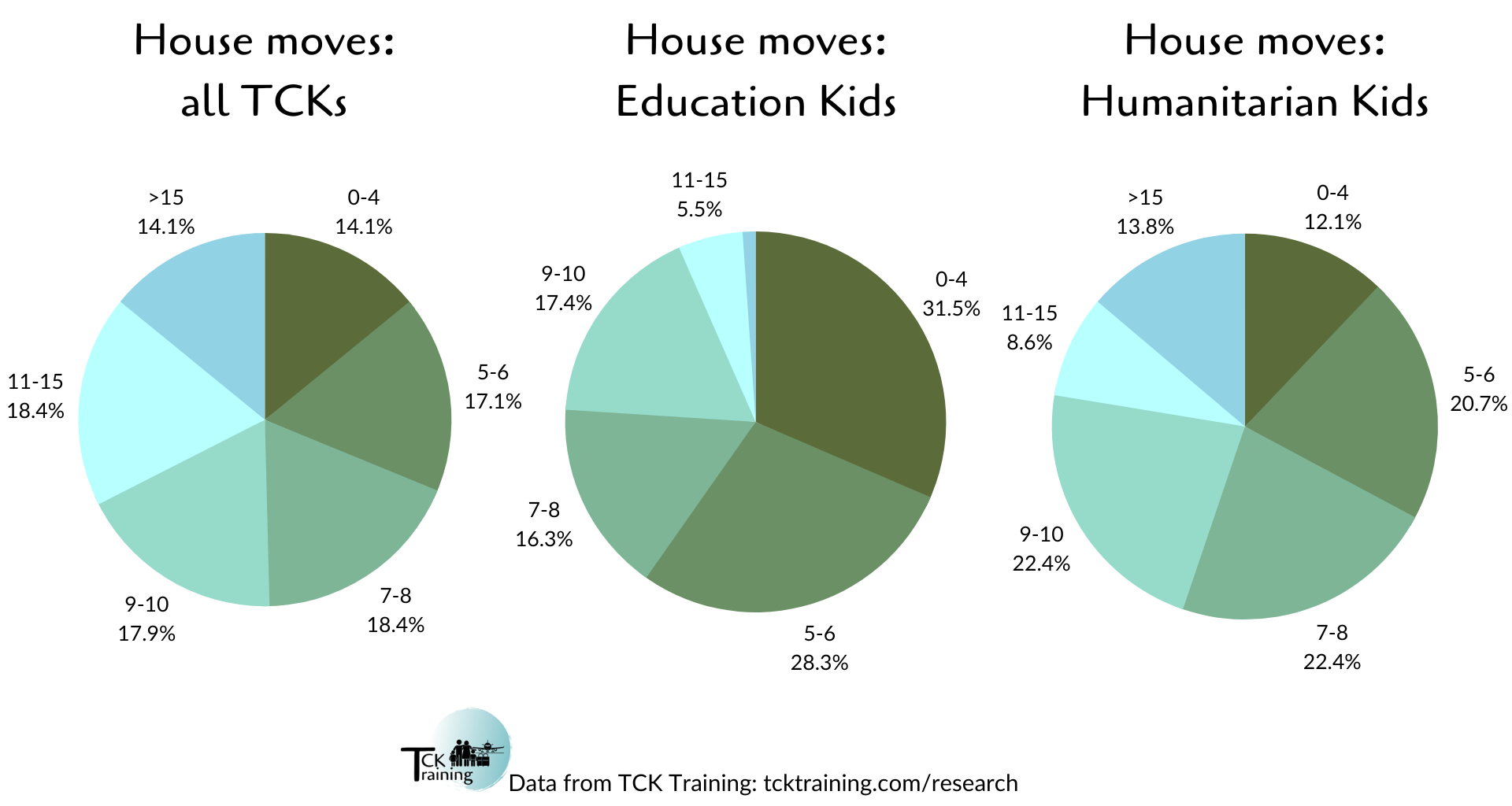
ACE scores
Adverse Childhood Experiences have been widely studied since the 1990s, across multiple countries and continents. Scores of four or higher are considered high risk, as numerous studies have linked scores of 4+ to various negative behavioral, psychological, and physical health outcomes.There was not much differentiation between the two sub-groups when it comes to ACE scores, despite the high mobility among the Humanitarian sub-group. The Edu-NGO group had lower ACE scores than the group overall, and especially than the non-mission group, but still higher than studies of single nation groups done previously.

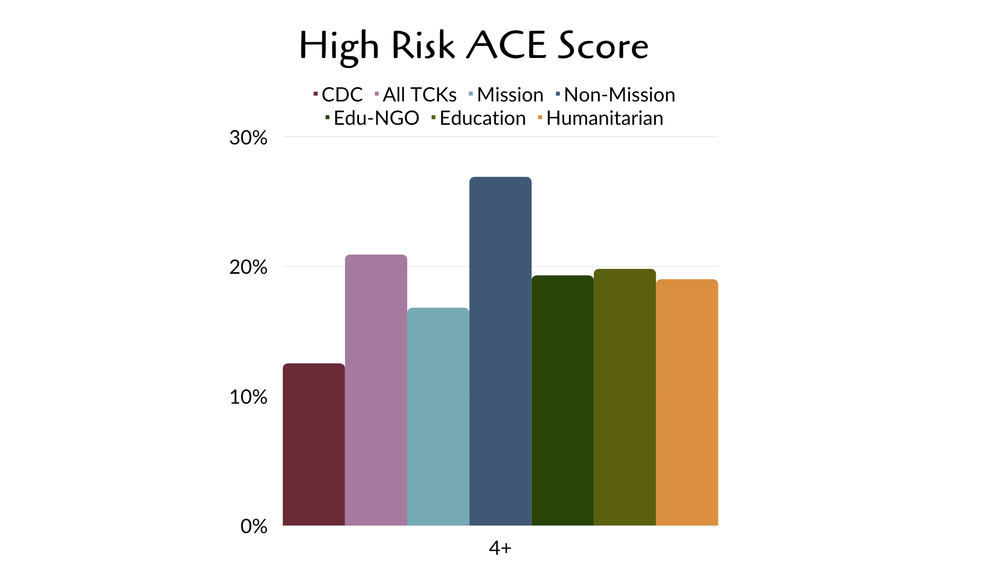
In the survey overall, TCKs who experienced extreme mobility were significantly more likely to have high ACE scores.
Caution and Hope:
The Prevalence of Adverse Childhood Experiences in Globally Mobile Third Culture Kids
While the number of TCKs from the Humanitarian sub-group is too small for more in-depth analysis, further research with this group is certainly indicated, to see if there is a particular protective factor at work here.
Caution and Hope
Despite this positive note, there is still reason for caution. One fifth of TCKs in the Edu-NGO sector recorded high-risk ACE scores of 4+. This puts them at higher risk for health complications, addiction, and mental illness. Yet there is also hope. In our white paper we also highlighted research into Positive Childhood Experiences (PCEs). We know that when a high number of PCEs are present during childhood, they have a protective effect even when high ACEs are also present. Unfortunately:
Caution and Hope:
The Prevalence of Adverse Childhood Experiences in Globally Mobile Third Culture Kids
When international schools, and even local schools, invite teachers to work outside their passport countries, they are also inviting risk into the lives of these teachers’ families. When humanitarian organizations, including NGOs, IGOs, and governmental charities, send their employees to live and work abroad, they put their employees’ children at higher risk. Therefore it is the responsibility of these sending and inviting organizations to implement protective measures, and provide education and training to their staff to help them do the same at home. TCK Training is by your side the whole way, providing books, curricula, in-person and online training for staff and parents, and certifications so your on-site staff can improve their TCK care. Whatever you need to better protect the children in your care, we’re here to help.
Other blog posts in this series:
